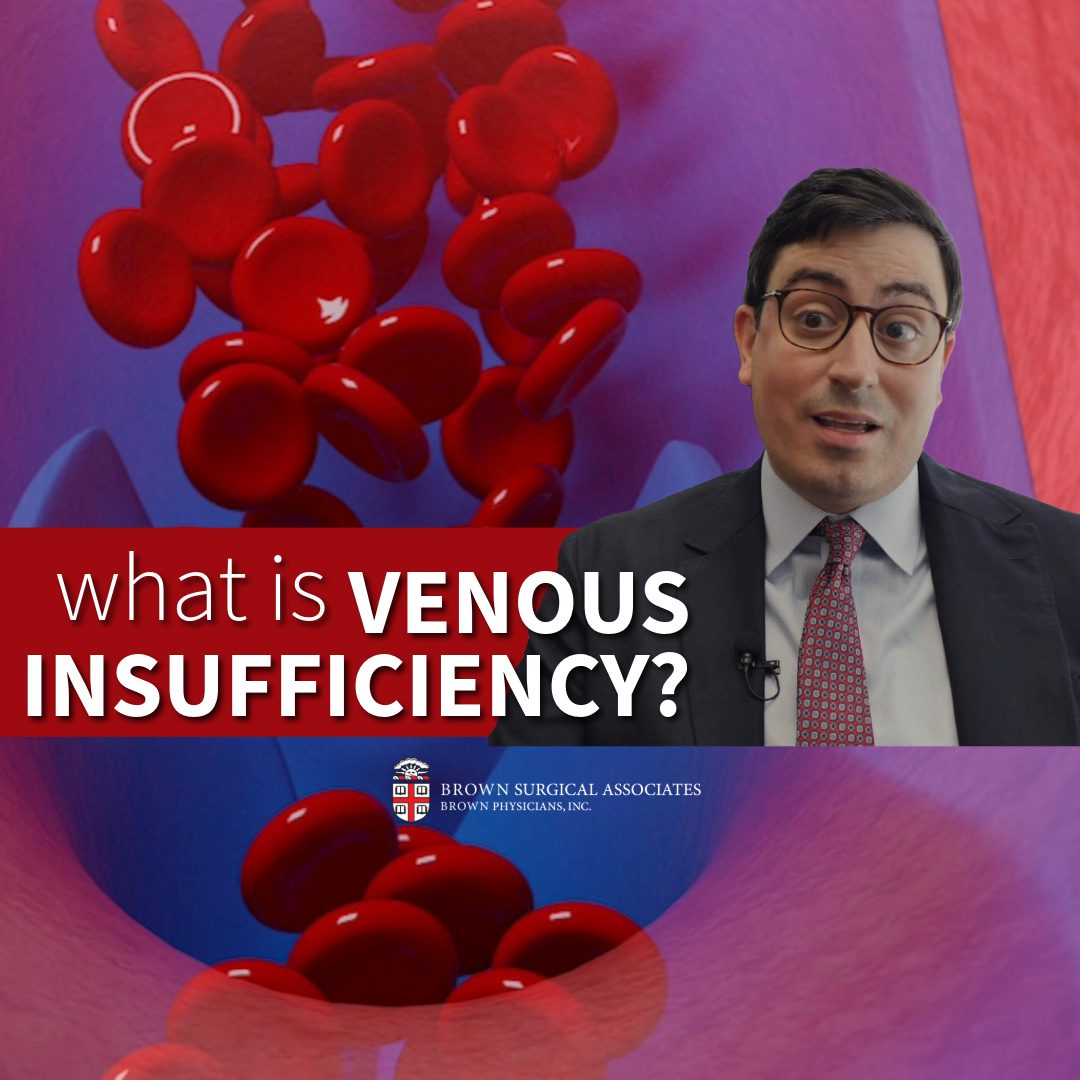
Venous insufficiency is a common yet often overlooked condition affecting millions of Americans. If you’re experiencing leg swelling, varicose veins, or skin discoloration, it could be a sign of chronic venous insufficiency. Fortunately, with early detection and proper treatment, this condition is highly manageable.
In this post, Dr. Anthony Meena, a board-certified vascular surgeon at Brown Surgical Associates, shares expert insight into what causes venous insufficiency, how to recognize it, and the best treatment options available.
What Is Venous Insufficiency?
Chronic venous insufficiency (CVI) occurs when the valves in your leg veins don’t work properly, causing blood to flow backward and pool in your lower extremities. This is also known as venous reflux.
Unlike heart valve problems, venous valve dysfunction isn’t typically life-threatening—but it can lead to painful symptoms and long-term complications if left untreated.
Common Symptoms of Venous Insufficiency
Many people dismiss early signs of venous insufficiency, assuming it’s just a cosmetic concern. But the symptoms often progress over time. Watch for:
-
Spider veins (small, visible blood vessels on the skin)
-
Varicose veins (twisted, bulging veins)
-
Leg swelling, especially after long periods of standing or sitting
-
Skin changes, such as discoloration, thickening, or dryness
-
Venous ulcers or leg wounds that heal slowly or recur
If you have one or more of these symptoms, it’s time to consult a vein specialist.
What Causes Venous Insufficiency?
The primary cause of venous insufficiency is faulty or weakened valves in the leg veins. These valves normally keep blood flowing upward toward the heart. When they become leaky, blood flows backward (reflux), leading to vein enlargement and pressure buildup.
Common risk factors include:
-
Genetics/family history
-
Age (especially over 50)
-
Prolonged standing or sitting
-
Obesity
-
Pregnancy
-
Prior leg injuries or blood clots
How Is Venous Insufficiency Treated?
The good news is that venous insufficiency is treatable, and most patients find relief with a combination of conservative and minimally invasive therapies.
1. Compression Stockings
Dr. Meena emphasizes starting treatment with prescription-strength compression stockings. These garments help promote blood flow and reduce swelling. For many patients, this is all that’s needed to manage symptoms effectively.
2. Minimally Invasive Vein Procedures
For more advanced or symptomatic cases, in-office procedures are available, including:
-
Endovenous laser treatment (EVLT)
-
Radiofrequency ablation
-
Sclerotherapy
-
Microphlebectomy
These safe, outpatient treatments can significantly improve comfort, appearance, and overall vein health.
Why Early Evaluation Matters
Dr. Meena stresses the importance of early diagnosis. The sooner venous insufficiency is identified, the more effective and less invasive the treatment. Don’t wait for symptoms to worsen—schedule a vein evaluation today if you suspect something isn’t right.
Live Comfortably with Healthy Legs
With the right treatment plan, millions of people manage venous insufficiency and live active, healthy lives. Whether you’re dealing with mild spider veins or more severe leg pain and swelling, there’s a solution available.
Brown Surgical Associates specializes in comprehensive vein care in Rhode Island, and Dr. Anthony Meena and our vascular team are here to help you feel better—one step at a time.
Book Your Vein Consultation Today
If you’re searching for venous insufficiency treatment in Rhode Island or wondering, how to get rid of varicose veins, contact Brown Surgical Associates to schedule a consultation. Get expert care, accurate diagnosis, and treatment tailored to your needs.


